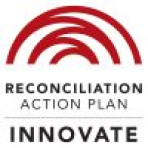We receive 11 million pieces of information every day and make approximately 35,000 decisions. Our brains use our biases and stereotypes to get through each day without making every decision a monumental task. By the end of our day decision fatigue has set in and we rely on our preconceived notions of the world around us to make choices more and more.
Some decisions, like choosing what to have on toast for breakfast, can rely entirely on our own personal preferences. Others, like choosing a candidate to hire for a new position requires us to be more objective and inclusive. Bias, such as whether we personally like man buns or tattoos, in these situations can have a much larger effect on ourselves, our employees and our businesses.
Even though we know that in situations within the workplace we need to be inclusive, research has shown time and time again that we rely on stereotypes all the time. It’s human nature for us to develop unconscious biases that affect our attitudes and perceptions of ourselves and others and so, in order to create inclusive and diverse workplaces we need to consciously work against our ingrained patterns of thinking.
What’s so bad about unconscious bias?
Unconscious bias in the workplace can have detrimental effects and lean into the territory of discrimination.
Recently in the US, Starbucks found itself at the centre of controversy when a manager called the police on two black men who had been waiting for a friend in the store. The two men were released without being charged but it put a spotlight on the business, who went on to apologise and announced it would close more than 8,000 of its stores to provide ‘racial bias’ training for 175,000 employees. Starbucks promised that the sessions would focus on unconscious bias training in order to educate staff on the hidden causes of everyday racial discrimination.
Australia is not immune to the effects of these biases with research showing that applicants from diverse backgrounds had to submit significantly more applications to secure job interviews. To attain as many interviews as an Anglo job applicant, an Italian person had to submit 12% more applications, an Indigenous person 35%, a Middle Eastern person 64% more and a Chinese person, 68% more.
Within a business itself, relying on stereotypes can mean talented people are excluded from career progression, a range of voices within the business go unheard and employees are not able to fully contribute within the workplace. Non-inclusive workplaces are not conductive of productivity or creativity as they lead to less trust in management, lowered morale and a higher chance of talented employees seeking other jobs.
In fact, unconscious bias is proven to have detrimental effects and businesses that do not actively fight to reduce it are putting themselves at a competitive disadvantage against their rivals.
A Catalyst report reveals that companies with higher proportions of female board directions outperformed others by 53%. According to the Delivering Through Diversity report, companies with the most ethnically diverse executive teams are 33% more likely to outperform their peers on profitability. With statistics like these and a whole range of other benefits associated with a diverse and inclusive workplace, working to reduce unconscious bias should be a top priority.
This video by Google illustrates how unconscious bias affects our decisions in the workplace.
How can we fix it?
Combatting unconscious bias is difficult because it often seems like we are going against what simply ‘feels right’. Despite this, challenging unconscious bias is worth undertaking in order to build a more supportive and inclusive workplace that encourages diversity.
- Encourage individuals and teams to use the Harvard Implicit Assessment Test
This test can help staff gain a greater awareness about their own biases, preferences and beliefs. It’s worth reminding employees that everybody has their own unconscious biases- it’s a part of our human nature- but being aware of them can lead to reversals in biased outcomes.
- Set objective criteria
Setting objective criteria for decisions, such as in the hiring process, is proven to remove biases. Data is not immune to biases, but it does remove most personal influences from the decision-making process. Things like meeting quotas, blind performance ratings and external feedback can all assist in making decisions based on actual performance and abilities, rather than personal opinion.
- Work to reduce stress in the workplace
When we’re busy, tired, anxious or under pressure, we’re more likely to give into unconscious bias. Take, for example, judges on a prison parole board. It was found that whether parole was given depended on the time of day; prisoners who appeared in the morning received parole 70% of the time and those appeared later in the day only received parole 10% of the time. This perfectly illustrates how decision fatigue affects us and by reducing conditions that force us to rely on stereotypes (such as unrealistic work deadlines) we can create a more diverse environment.
- Collecting data
Collecting data and keeping records is a simple and effective way to identify patterns of bias. For example, in 2014 it was pointed out that 77% of Google’s doodles celebrating famous leaders and innovators birthdays were men. The Doodle team were shocked by the breakdown and began tracking the diversity of their commemorations in order to improve diversity.
- Hold yourself accountable
In order to challenge our biases, we need to be constantly question why we’re making decisions. Justifying our decisions to ourselves and asking for feedback are ways to ensure we are using objective criteria in our decision making rather than inherent biases.

